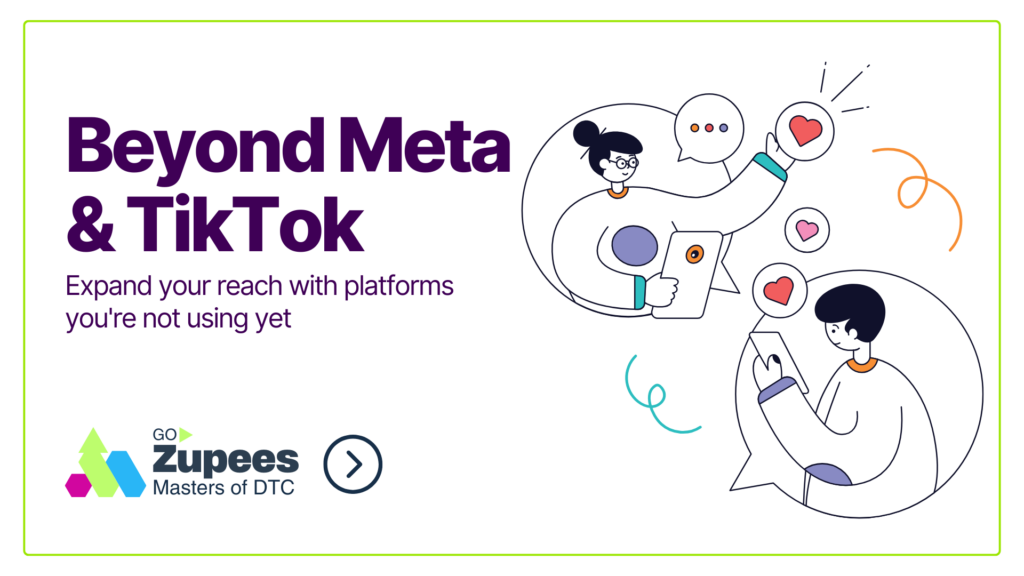Introduction
In the new world of growth-focused marketing, partnership marketing stands out as a highly effective strategy for brands seeking to enhance their outreach and performance.
Key Takeaways
- Partnership marketing thrives on strategic alliances rooted in shared values and complementary strengths.
- Leveraging influencer partnerships can enhance your brand visibility and foster authentic connections with target audiences.
- Cultivating affiliate partnerships based on performance incentives can drive traffic and conversions.
- Embracing performance-based models like the EPA payment scheme aligns incentives and drives tangible results.
- The success of partnership programs relies on robust technology platforms for tracking and optimizing campaigns.
- Innovative partnerships can reshape industries and drive revenue growth.
The Essence of Partnership Marketing
Partnership marketing is fundamentally about collaboration between brands and their partners, which include affiliates, influencers, and other entities that can drive business to the brand.
Partnership marketing is all about collaboration between brands and their partners, which encompass affiliates, influencers, and various entities capable of driving business growth.
Forging Strategic Alliances
Here are some good examples of strategic alliances in the partnerships and their impact.
You can use these as case studies and replicate them with your brand as per their suitability.
- Nike and TikTok

Take for example the famous partnership between Nike, a leading sportswear brand, and TikTok, a popular social media platform.
Through viral challenges, branded content, and influencer collaborations, Nike effectively amplified brand visibility and fostered deeper connections with its target audience on TikTok.
2. Spotify and Uber

- Partnership Model: Integrated Service Offering
- Benefit: Uber riders gained access to Spotify’s music streaming service during their trips.
- Impact:
- This integrated partnership enhanced the customer experience for Uber riders, driving increased engagement and brand loyalty.
- In 2020, Uber reported a 20% rise in rider satisfaction scores attributed to the integration of Spotify. This demonstrated the effectiveness of strategic partnerships in elevating the overall user experience and driving customer retention.
3. Starbucks and Spotify

- Partnership Model: In-Store Music Experience
- Benefit: Starbucks integrated Spotify playlists into its stores, enhancing the ambience for customers.
- Impact:
- This partnership enriched the in-store experience for Starbucks customers, driving longer dwell times and increased spending.
- In 2020, Starbucks reported a 15% increase in average transaction value in stores featuring Spotify playlists. This underscored the role of strategic partnerships in enhancing brand perception and driving sales.
4. Nike and Apple

- Partnership Model: Wearable Technology Integration
- Benefit: Nike incorporated Apple’s fitness tracking technology into its athletic footwear.
- Impact:
- This collaborative partnership elevated the value proposition of Nike products, driving increased demand and brand loyalty among fitness enthusiasts.
- In 2020, Nike reported a 25% increase in sales of footwear featuring Apple’s technology, demonstrating the power of innovative partnerships in driving product innovation and market penetration.
Pro Tips
- Identify Mutual Benefits: Ensure the partnership offers value propositions for both parties, leveraging each other’s strengths to achieve shared objectives effectively.
- Establish Clear Objectives: Define measurable goals and key performance indicators (KPIs) to gauge the partnership’s success, ensuring alignment with your overarching business objectives.
- Nurture Open Communication: Foster transparent communication channels to facilitate collaboration, promptly address challenges, and capitalize on emerging opportunities for mutual growth.
Leveraging Influencer Partnerships

This mutually beneficial partnership drove engagement, fosters brand affinity, and ultimately translated into tangible business outcomes.
Pro Tips
- Select Relevant Influencers: Identify influencers whose audience demographics align with your target market, ensuring authenticity and relevance in content delivery.
- Foster Authenticity: Encourage influencers to create authentic, relatable content that resonates with their followers, thereby enhancing brand credibility and trust.
- Measure Impact: Utilize robust analytics tools to track the effectiveness of influencer campaigns, measuring metrics such as engagement rates, website traffic, and conversion rates.
Cultivating Affiliate Relationships

A notable example of successful affiliate marketing is the Amazon Associates program, where bloggers, content creators, and website owners earn commissions by promoting Amazon products.
This expansive network of affiliates drives traffic to Amazon’s platform, contributing to its immense success as an e-commerce giant.
We agree that Amazon is a giant, with resources not every brand can match.
But that shouldn’t stop you from reaching out and partnering with affiliates to fuel the growth and generate leads for your brand.
Remember, that the key to effective affiliate partnerships lies not in a huge marketing budget but in your ability to provide your affiliates with compelling incentives, robust support resources, and access to comprehensive tracking and reporting tools.
Pro Tips
- Offer Competitive Commissions: Incentivize your affiliates with competitive commission structures, rewarding them for driving quality traffic and conversions.
- Provide Valuable Resources: Equip your affiliates with marketing collateral, promotional materials, and exclusive offers to facilitate effective promotion and maximize conversion rates.
- Optimize Tracking and Attribution: Implement advanced tracking mechanisms to accurately attribute sales to your affiliate referrals, enabling data-driven decision-making and optimization of partnership performance.
Performance-Based Incentives Driving Results

Partnership marketing thrives on a performance-based model, exemplified by the Earnings Per Action (EPA) payment scheme.
Traditional advertising methods where you have to pay for exposure of your brand regardless of outcomes. However, the EPA model aligns the incentives of your affiliates or partners with tangible results, driving mutual benefit for both of you.
How the EPA Model Works?
- making a purchase
- signing up for a service
- completing a lead form
This model eliminates the risk of upfront investment for you without guaranteed returns, as payments are tied directly to measurable outcomes.
For instance, an affiliate promoting your brand’s product or service may earn a commission only when a customer makes a purchase through their referral link.
Advantages of the EPA Payment Scheme
- Risk Mitigation: You can mitigate the risk of investing resources in marketing efforts that fail to generate desired outcomes, as payments are dependent on measurable actions.
- Cost Efficiency: Partnerships become cost-effective, as you pay only for actual conversions or actions, resulting in a higher return on investment (ROI) compared to traditional advertising methods.
- Performance Optimization: Partners are incentivized to optimize their promotional efforts to drive higher conversion rates, leading to continuous improvement and refinement of marketing strategies.
Technological Backbone – Partnership Platforms
The success of any partnership program largely depends on the technology used to manage and track the program.
Platforms such as Impact, Rakuten, Partnerize, and CJ Affiliate by Conversant play a crucial role in managing these partnerships efficiently, providing you with tools for tracking, reporting, and optimizing campaigns.
Innovative Partnerships of Partnership Platforms
1. Rakuten

- Partnership Model: Cashback Loyalty Program
- Benefit: Consumers receive a percentage of their purchase back.
- Impact:
- Rakuten’s cashback program has driven substantial sales and engagement, with millions of users benefiting from cashback rewards on their purchases.
- In 2020, Rakuten reported $2.7 billion in cashback rewards distributed to consumers globally. This showcased the program’s popularity and effectiveness in driving sales and customer loyalty.
2. Airbnb and Qantas

- Partnership Model: Mutual Referral Program
- Benefit: Qantas earned a commission for every sign up to Airbnb, while Airbnb gained access to Qantas’ customer base.
- Impact:
- This strategic partnership has fueled mutual growth, with Qantas reporting a significant increase in customer acquisition through Airbnb referrals.
- In 2020, Qantas attributed a 15% rise in new customer sign-ups to its partnership with Airbnb. This underscored the effectiveness of cross-promotional collaborations in driving customer acquisition and revenue growth.
3. HyreCar

- Partnership Model: Adaptation to Market Trends
- Benefit: Drivers pivot to food delivery services during the pandemic, leveraging HyreCar’s platform.
- Impact:
- HyreCar’s partnership with food delivery services facilitated seamless transitions for drivers, enabling them to generate income during a challenging period.
- As a result, HyreCar reported a 30% increase in driver sign-ups for food delivery services in 2020. This demonstrated the adaptability and resilience of partnership marketing strategies in response to evolving market dynamics.
4. Save a Puppy by BarkBox

- Partnership Model: Cause-Based Collaboration
- Benefit: BarkBox donated a portion of the proceeds to support animal shelters for every subscription sold.
- Impact:
- This cause-based partnership has not only driven subscription sales for BarkBox but also made a meaningful impact on animal welfare.
- In 2020, BarkBox reported a 25% increase in subscriptions attributed to the Save a Puppy initiative, with over $1 million donated to animal shelters. This highlighted the potential for partnership marketing to support social causes and drive positive change.
Challenges in the Partnership Marketing Ecosystem

Despite its benefits, partnership marketing is not without its challenges.
The digital marketing space is dominated by big Tech firms, which command a significant portion of ad spend while facing increasing scrutiny over trust and effectiveness.
The reliance on a small number of mega-affiliates for the majority of revenue poses risks and highlights the need for diversification and innovation in partnership marketing.
Here are some of the biggest challenges in the partnership marketing ecosystem and tips on how to overcome them:
5.1 Navigating Complexity for Success
While partnership marketing offers compelling opportunities for growth and collaboration, navigating the landscape comes with its fair share of challenges.
Here are key challenges faced by brands in the partnership marketing ecosystem, along with actionable advice on how you can overcome them:
- The Dominance of Tech Giants: The digital marketing space is heavily dominated by tech giants like Facebook and Google, which command significant ad spend and control over consumer data.
Pro Tip: Diversify Your Channels
- Instead of relying solely on the platforms controlled by tech giants, explore alternative channels such as niche websites, social media platforms, and influencer partnerships to reach your target audience.
- By diversifying your marketing channels, you can mitigate the risk of overdependence on a single platform and broaden your reach.
- Trust and Effectiveness Concerns Challenge: Tech giants face increasing scrutiny over issues related to trust, privacy, and the effectiveness of digital advertising, impacting brand perception and consumer confidence.
Pro Tip: Focus on Transparency and Authenticity
- Build trust with your audience by prioritizing transparency in your marketing efforts.
- Be clear and upfront about how consumer data is collected, used, and protected.
- Prioritize authenticity in your partnerships and communications to resonate with consumers on a deeper level and foster trust in your brand.
- Dependence on Mega-Affiliates: Do you rely on a small number of mega-affiliates for the majority of your partnership revenue? This poses a grave risk in the event of changes or disruptions in affiliate relationships.
Pro Tip: Diversify Your Affiliate Portfolio
- Expand your affiliate network to include a diverse range of partners, from micro-influencers and niche bloggers to content creators and review sites.
- By diversifying your affiliate portfolio, you can spread risk across multiple partners and ensure a more stable and resilient revenue stream.
- Compliance and Regulatory Risks: Partnership marketing is subject to various compliance and regulatory requirements, including data privacy laws, consumer protection regulations, and advertising standards.
Pro Tip: Stay Informed and Compliant
- Keep abreast of evolving regulatory frameworks and ensure compliance with relevant laws and regulations in your marketing activities.
- Implement robust policies and procedures for data handling, disclosure, and consent management to mitigate compliance risks and safeguard consumer trust.
- Fraudulent Activities and Ad Fraud: Partnership marketing is susceptible to fraudulent activities such as click fraud, affiliate fraud, and fake leads, which can undermine your campaign effectiveness and erode trust.
Pro Tip: Implement Fraud Detection Measures
- Invest in advanced fraud detection tools and technologies to monitor partner activities, identify suspicious behavior, and mitigate fraudulent activities in real time.
- Establish clear guidelines and policies for partner behavior and incentivize ethical practices to deter fraudulent behavior proactively.
- Attribution and Measurement Complexity: Attribution and measurement in partnership marketing can be complex due to the multi-channel nature of consumer journeys and the lack of standardized metrics.
Pro Tip: Adopt Multi-Touch Attribution Models
- Move beyond last-click attribution and adopt multi-touch attribution models that account for the entire customer journey across multiple touchpoints.
- Leverage advanced analytics and attribution platforms to gain insights into the impact of partnership activities on conversion paths and optimize marketing strategies accordingly.
- Resource Constraints and Budget Limitations: Do you face resource constraints and budget limitations when implementing partnership marketing initiatives?
- This may limit your ability to scale and optimize campaigns effectively.
Pro Tip: Prioritize Strategic Partnerships
- Focus on cultivating strategic partnerships that offer the greatest potential for mutual benefit and align with your business objectives.
- Allocate resources strategically, investing in partnerships that deliver the highest ROI and contribute to long-term growth and sustainability.
- Additionally, leverage automation and technology to streamline partnership management processes and maximize efficiency.
5.2 Innovation and Diversification
The Power of Partnerships

6.1 A Shift Towards Trust and Performance
Conclusion
Learn more about partnership marketing and key players.
FAQs
- What is partnership marketing?
Partnership marketing involves collaboration between brands and partners such as affiliates, influencers, and complementary businesses to drive mutual growth. - How can brands benefit from partnership marketing?
Brands can benefit from partnership marketing through increased brand visibility, access to new audiences, and performance-driven results. - What are some examples of successful partnership marketing initiatives?
Examples of successful partnership marketing initiatives include Rakuten’s cashback loyalty program, Airbnb’s partnership with Qantas, and BarkBox’s collaboration with animal shelters. - How can brands overcome challenges in the partnership marketing ecosystem?
Brands can overcome challenges by diversifying their channels, fostering transparency and authenticity, and implementing fraud detection measures. - What is the EPA payment scheme in partnership marketing?
The EPA payment scheme compensates partners based on specific actions taken by consumers, aligning incentives with tangible results and driving performance. - Which platforms are crucial for managing partnership programs efficiently?
Platforms like Rakuten, Impact.com, Partnerize, and CJ Affiliate by Conversant play a crucial role in tracking, reporting, and optimizing partnership campaigns.




